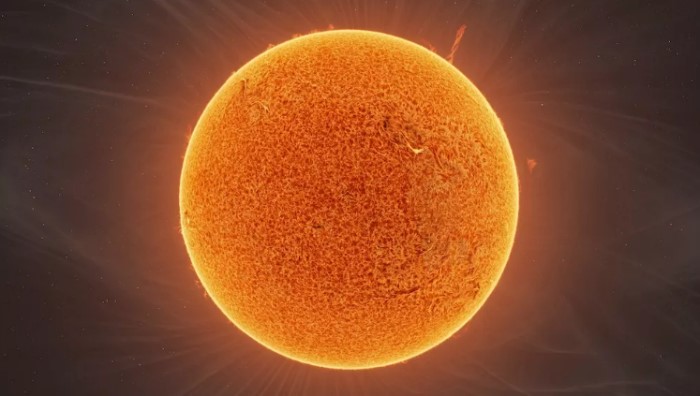Give or take the odd cloudy day, the Sun is a daily presence in our lives.
But can any of us say what it actually looks like? What would you say? Really, really, really bright?
Of course, it is extremely bright. So much so that we can't look at it. And therefore, can't describe any of its finer features.
But thankfully for us, we do have high-tech telescopes and cameras that can do just that. And now, a pair of astrophotographers have created what might just be the ultimate image of the Sun.
Andrew McCarthy and Jason Guenzel created their composite (or combined) image by collecting data from about 90,000 individual images of our local star. Yes, you read that right: ninety thousand. Some were images the pair took themselves, others were taken by the Solar and Heliospheric Observatory, a NASA/ESA probe.
The final result is a stunner—just as breathtaking from a distance as it is up close.
And surprisingly ... fuzzy!
Incredible details
Thanks to the composite image's fine resolution, you can really zoom in. To see what we mean, check out Andrew's Instagram post below.
Not only does it show the full image, there are six more slides that each zoom in on one part of the Sun. And then there's a final surprise—an eighth slide that shows a video of a solar tornado that was as tall as 14 Earths!
Have a look!
View this post on Instagram
What did we just see?
Pretty amazing, right? So what are we seeing on the Sun's surface that makes it look so cuddly and cozy?
Those wispy tails all over the star are called spicules. These are actually jets of plasma, which is a highly ionized state of matter that is beyond normal gas. (Plasma is so supercharged that it is full of electrons and protons that are unbound, meaning the particles are not attached to an atom.)
In this image, the spicules look kind of like fine strands on a particularly fluffy woolen sweater. But in reality, each of the jets would be enormous, stretching for thousands of kilometres. And then there is that eighth image—the solar tornado.
Back in mid-March, this incredible phenomenon raged on the Sun's surface for three days. At its peak, this whirling dervish of solar plasma was about 178,000 km (110,000 miles) tall. Yes, that is about 14 Earths stacked on top of each other. Remarkable!
All in all, we're thrilled with any chance we get to better understand our nearest star. It's nice to put a face to the name after all of these years!
For more fun facts about the Sun, check out our recent General KnOWLedge video on how it burns without oxygen.
 Hello there, Sun! You're looking great! The composite image is called Fusion Of Helios. (Andrew McCarthy and Jason Guenzel)
Hello there, Sun! You're looking great! The composite image is called Fusion Of Helios. (Andrew McCarthy and Jason Guenzel)









